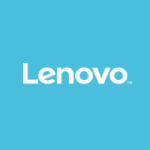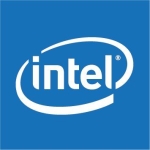By implementing Dell PowerEdge Rack Servers, we wanted to transcode media in a fairly quick way. We can have media for only about a quarter of an hour. From the moment the media gets to us to the moment it is gone, we only have about a quarter of an hour, so we need a lot of power to be able to achieve something in a minimum amount of time.
Overall, we are very happy with the fact that we managed to get servers with last-generation CPUs. Besides that, like everyone else, we are trying a bit to reduce our energy bills. There is a big effort to be made on that front.
In terms of resiliency, our servers tend to be fairly far in our infrastructure. We have a couple of layers of firewall upfront. We also have proxy and reverse proxy, so the range of attack is fairly weak, and behind that, we have Linux. We shield with firewalls and other safety measures.
Overall, we are quite happy with it in terms of energy consumption. We have a fairly low consumption.
We hardly upgrade our servers to handle the evolving needs of high-performance workloads. As a matter of fact, when we build a platform, it is for a very specific need, and it is made to last three to five years. After that, the platform disappears, and the servers also leave with that. We buy new servers according to the new platform. We have less upgrading on the servers because they are already adapted to our needs.
Dell PowerEdge Rack Servers have helped to reduce unplanned production downtime. The servers that we have rarely break down, so, overall, we can change quite a lot of components on the run. We can manage to have a production that is running almost 99.99% of the time.
The OpenManage console has affected our IT staff’s productivity quite a bit. When new equipment arrives, we only have to put it in racks at the data center and all of the installation and management is done remotely, so we no longer need to spend a certain amount of time in the data center.
Using PowerEdge Rack Servers has affected the overall flexibility of our operations or business. We do have the ability to intervene on them, which is important. It is obviously easier than having a server where when we have a problem, we must go to the data center, or we must call someone to come and help. We might even have to stop the server, and that is quite annoying.
I would rate Dell PowerEdge Rack Servers a nine out of ten.
Foreign Language:(French)
Offre vitesse, économies d'énergie et 99.9% de durée de fonctionnement
Depuis combien de temps utilisez-vous les serveurs Dell PowerEdge Rack?
Dans notre société, cela doit faire plus de 20 ans. Ils utilisent du Dell depuis quasiment la création de la société. Je suis dans la société depuis six ans mais on déterre des vieux serveurs de temps en temps.
Quel est votre principal cas d’utilisation de cette solution? (Décrivez votre environnement).
Nous faisons du transcodage de média. On utilise principalement des serveurs avec beaucoup de CPUs pour pouvoir faire le transcodage. On a besoin de serveurs qui nous apportent beaucoup de puissance.
Décrivez comment les serveurs Dell PowerEdge Rack ont amélioré votre organisation. Si ce ne fut pas le cas, veuillez expliquer pourquoi.
En implémentant les serveurs Dell PowerEdge Rack, on voulait pouvoir transcoder de façon assez rapide. On peut avoir des médias pendant seulement un quart d’heure. Entre le moment où le média rentre chez nous et le moment où il doit sortir de chez nous, nous avons seulement un quart d’heure et donc, on a besoin de grosse puissance pour pouvoir le sortir en un temps minimum.
Globalement, nous sommes très contents du fait que nous arrivions à avoir des serveurs avec des CPUs de dernière génération. En plus, on essaye, comme tout le monde, de réduire notre facture énergétique. Il y a un gros effort de fait là-dessus.
En termes de résilience, nos serveurs ont plutôt tendance à être relativement loin dans notre infrastructure. On a deux couches de firewall devant. On a aussi du proxy et du reverse proxy donc, la couverture d’attaque est relativement faible et derrière, on va être sur du Linux. On blinde au maximum avec des firewalls et d’autres mesures de sécurité.
Globalement, on est plutôt contents en ce qui concerne la consommation d'énergie. On a une consommation qui est relativement faible.
Pour gérer les besoins évolutifs des charges de travail à haute performance, on ne fait quasiment pas évoluer nos serveurs. En fait, quand on monte une plateforme, c’est pour un besoin spécifique et c’est fait pour durer de 3 à 5 ans. Après ce temps-là, la plateforme disparaît et les serveurs partent avec. On achète de nouveaux serveurs en fonction des nouvelles plateformes. On n’a plus d'évolutivité sur les serveurs parce qu’ils sont déjà adaptés à notre besoin.
L’utilisation des serveurs Dell PowerEdge Rack nous a aidés à réduire les temps d'arrêt de production imprévus. Les serveurs sont très rarement en panne donc, globalement, on peut changer pas mal de composants à chaud. On arrive à maintenir une production qui est en fonctionnement à 99.99% du temps ou presque.
La console OpenManage a pas mal affecté la productivité de notre personnel informatique. Quand on a du matériel qui arrive, on se contente de le mettre en racks dans le centre de données et derrière, toute l’installation et tout le management se fait à distance et donc, on n’a plus besoin de passer un certain nombre d’heures dans le centre de données.
L’utilisation des serveurs PowerEdge Rack a affecté la flexibilité globale de nos opérations ou de notre entreprise. Nous avons la capacité de pouvoir intervenir dessus, ce qui est important. C’est forcément plus facile que d’avoir un serveur sur lequel, dès qu’on a un problème, on doit se rendre au centre de données ou on doit appeler quelqu’un pour venir nous aider. Il nous arrive même de devoir arrêter un serveur et ça, c’est assez ennuyeux.
Quelles fonctionnalités avez-vous trouvé les plus utiles et pourquoi?
Le potentiel de calcul avec des CPUs modernes est très utile. Nous avons la capacité d’augmenter le nombre de CPUs par machine et de faire des économies d'énergie.
Dans quels domaines les serveurs Dell PowerEdge Rack pourraient-ils être améliorés?
On n’a pas eu ni vraiment rencontré de gros problèmes. Au niveau des prix et du support, ils ont toujours été très réactifs mais on sait que lorsqu’on a besoin de plus de stockage, on a tendance à trouver beaucoup moins cher ailleurs. Le matériel est très bien mais le prix est un peu trop élevé et en plus, le support pour les pièces pourrait être meilleur.
Avez-vous utilisé une solution différente auparavant et le cas échéant, pourquoi avoir changé?
Comme beaucoup de monde, on n’utilise pas que des produits Dell. On utilise un peu de HPE. J’ai une préférence pour Dell mais on a encore quelques vieux serveurs encore d’autres constructeurs qui trainent. On a du vieux matériel mais tout ce qui est récent est soit du Dell, soit du HPE. On a changé les vieux serveurs tout simplement parce qu’ils étaient en fin de vie.
Avant de faire votre choix, avez-vous évalué d’autres options? Le cas échéant, lesquelles?
On travaille principalement avec Dell et HPE. Pour évaluer les options, on prend en compte la facilité d'exploitation du serveur. Pour moi, Dell est imbattable là-dessus. On n’est pas une très grosse entreprise et donc, on fait très attention au coût de nos serveurs.
Que conseillez-vous aux autres en ce qui concerne les coûts d’installation, les tarifs et/ou les licences?
En ce qui concerne les licences, on a peu de serveurs. On n’a plus besoin des licences. On les prend directement chez les constructeurs ou les personnes qui conçoivent les logiciels plutôt que de les prendre avec les serveurs parce qu'on n'est pas forcément sûr de l’usage spécifique de chaque serveur. On prend donc les licences après.
Au niveau tarifaire, il y a des moments ou Dell ne sait pas forcément s’aligner avec d’autres constructeurs qui nous proposent quelque chose de moins cher. Sur du stockage, ça varie mais le prix peut aller du simple au double.
Quelles sont vos impressions sur la scalabilité de cette solution?
Nous faisons peu de scalabilité car nous achetons selon nos besoins.
Quelles sont vos impressions sur la stabilité de cette solution?
Ils sont stables.
Avez-vous constaté un RSI (Retour Sur Investissement)? Si oui, de quelle manière (p. ex. mesures/points de données)?
Globalement, on a constaté un RSI. Le RSI est en termes de productivité au niveau du service infrastructure. On n’a pas besoin de changer régulièrement les pièces et on peut faire toute la partie administrative à distance, c’est un gain de temps qui est assez important.
La configuration initiale était-elle simple ou complexe et de quelle manière?
Je suis impliqué dans l'implémentation de ces serveurs. L'implémentation est simple.
On sait qu’on va avoir une demi-journée dans le centre de données pour faire tout ce qui est partie rackage. Une fois cela fait, on peut se répartir les tâches parce que bien que les serveurs soient dans la même baie, on ne se marche pas tous sur les pieds pendant la tâche. On peut travailler en parallèle pendant l’installation d’un certain nombre de serveurs sans difficulté. Dès qu’on n’a pas de console et avec un écran à l'arrière du serveur, on est bien limité sur le nombre de serveurs sur lesquels on peut agir à la fois.
Avez-vous utilisé un revendeur ou une de vos équipes pour ce déploiement? Si à travers un revendeur, comment évalueriez-vous leur niveau d’expertise?
Nous faisons généralement tout nous-mêmes, en ce qui concerne les PowerEdge.
Décrivez votre expérience avec le service client et le support de Dell.
Leur support est très bon. Je leur donne une note de huit sur dix. Ils pourraient être plus réactifs sur leur envoi de pièces. Le service support est très réactif pour nous répondre mais ils ont besoin d’un peu de temps pour nous envoyer la pièce. Nous, on a plutôt tendance à demander les pièces. C’est nous qui faisons les remplacements. On ne demande pas le technicien avec. Et il nous est arrivé que la pièce soit délivrée à la mauvaise adresse.
Comment évalueriez-vous cette solution sur une échelle de 1à10 pour le service et le support?
8
Sur une échelle de 1 à 10 (1=le pire, 10=le meilleur), comment évalueriez-vous les serveurs Dell PowerEdge Rack? Veuillez expliquer pourquoi.
Je donnerais une note de neuf sur 10 aux serveurs Dell PowerEdge Rack.














